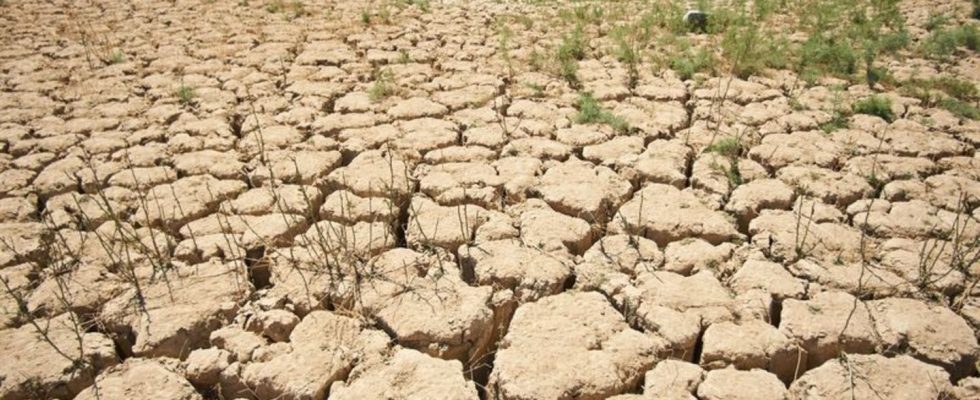Climate crisis
Six out of nine Earth limits exceeded
A symptom of the poor condition of the earth: earth fissured and cracked by drought on the banks of the Viñuela reservoir in Spain. photo
© Felipe Passolas/dpa
An international research team analyzes the condition of the earth based on various areas. “The Earth is a patient that is not doing well,” is the conclusion.
Human exploitation of planet Earth creates ever greater risks. According to a study, six out of nine so-called planetary limits have already been exceeded, in some cases significantly. These include, among other things, global warming, the destruction of habitats and the burden on the Environment with new types of substances such as pesticides, microplastics and nuclear waste.
“The Earth is a patient that is not doing well,” co-author Johan Rockström, director of the Potsdam Institute for Climate Impact Research (PIK), is quoted as saying in a statement from the institute. “We don’t know how long we can exceed crucial boundaries in this way before the effects lead to irreversible changes and damage.”
Crossing a planetary boundary marks a critical threshold for significantly increasing risks, explains first author Katherine Richardson from the University of Copenhagen: “We can imagine the Earth as a human body and the planetary boundaries as a form of blood pressure. A blood pressure of over 120/ 80 doesn’t mean there’s an immediate risk of a heart attack, but it does increase the risk.”
Significant excesses in global warming and the biosphere
The planetary boundaries, which are intended to define a safe space for humanity to operate, were defined for the first time in 2009. These include nine sub-areas such as the use of fresh water, the function of the biosphere, the climate and the aerosol pollution of the atmosphere. Now the international research team led by Rockström and Richardson analyzed the status of all nine systems.
The safe range has been significantly exceeded in terms of global warming and the integrity of the biosphere, the team writes in the journal “Science Advances” and points to, for example, the extinction of species and the destruction of habitats. “In addition to climate change, the functionality of the biosphere is the second pillar of the stability of our planet,” says co-author Wolfgang Lucht from PIK. “And as with climate, we are currently destabilizing this pillar.”
The limit has also been exceeded in the area of introducing new substances into the environment – i.e. the entry of human-made chemical compounds such as microplastics, pesticides or nuclear waste. The situation when it comes to freshwater consumption is not quite as critical, but here too the planetary limits have been exceeded, it goes on to say.
Ocean acidification is still just in the green
Global particle pollution in the atmosphere is currently still within the safe range, even if this limit is regularly exceeded in some regions such as South Asia. According to the researchers’ definition, ocean acidification is just in the green zone, as is ozone depletion in the upper atmosphere.
It is precisely from this development that the team hopes that other problems will also improve: in the 1990s, the depletion of the ozone layer exceeded the planetary limit. “But thanks to global initiatives achieved through the Montreal Protocol, this limit is currently no longer exceeded,” emphasizes Richardson.
To reassess the planetary boundaries, the research team used current studies and also simulated the development of the Earth using models of the Earth system and the biosphere for several hundred years into the future. They used the phase between the last Ice Age and the beginning of the Industrial Revolution as a basis for comparison.
1.5 degree target no longer realistic
If a limit has been exceeded, there are still ways to improve the situation, the team emphasizes, using the example of global warming to reforestation. Should humanity manage to limit the CO2 content of the atmosphere to 450 parts per million (parts per million, ppm) – currently it is 417 – and also limit the boreal and tropical forest cover to no less than 60 percent of the original forest cover Global warming could be slowed down significantly: “The simulation then suggests an average temperature increase over the country of 1.4 degrees by the year 2100,” it says.
However, many climate researchers believe that achieving the goal of limiting global warming to 1.5 degrees Celsius compared to the pre-industrial phase is no longer realistic.

